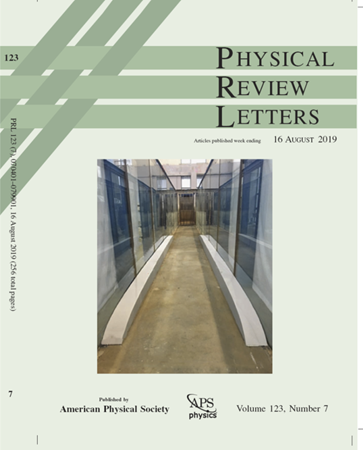Landau-Lifshitz-Gilbert动力学的量子模拟
IF 9
1区 物理与天体物理
Q1 PHYSICS, MULTIDISCIPLINARY
引用次数: 0
摘要
Landau-Lifshitz- gilbert (LLG)和Landau-Lifshitz (LL)方程在描述固体磁化动力学中起着重要的作用。虽然在[]中已经提出了LL动力学的量子模拟,但LLG的相应量子版本仍然未知。在这里,我们提出了这样一个量子LLG方程,固有地保持了量子态的纯度。我们研究了由两个相互作用的自旋为12的粒子组成的二聚体的量子LLG动力学。我们的分析表明,在铁磁耦合的情况下,最初不相关的自旋的演化反映了经典的LLG动力学。然而,在反铁磁情况下,我们观察到明显偏离经典行为,强调成为非局部相关的无自旋态的独特动力学。此外,当考虑最初纠缠的自旋时,我们的研究揭示了一种不同寻常的恢复型量子相关动力学形式,这与开放量子系统中通常看到的有很大不同。2024年由美国物理学会出版本文章由计算机程序翻译,如有差异,请以英文原文为准。
Quantum Analog of Landau-Lifshitz-Gilbert Dynamics
The Landau-Lifshitz-Gilbert (LLG) and Landau-Lifshitz (LL) equations play an essential role for describing the dynamics of magnetization in solids. While a quantum analog of the LL dynamics has been proposed in [], the corresponding quantum version of LLG remains unknown. Here, we propose such a quantum LLG equation that inherently conserves purity of the quantum state. We examine the quantum LLG dynamics of a dimer consisting of two interacting spin-12 particles. Our analysis reveals that, in the case of ferromagnetic coupling, the evolution of initially uncorrelated spins mirrors the classical LLG dynamics. However, in the antiferromagnetic scenario, we observe pronounced deviations from classical behavior, underscoring the unique dynamics of becoming a spinless state, which is nonlocally correlated. Moreover, when considering spins that are initially entangled, our study uncovers an unusual form of revival-type quantum correlation dynamics, which differs significantly from what is typically seen in open quantum systems. Published by the American Physical Society 2024
求助全文
通过发布文献求助,成功后即可免费获取论文全文。
去求助
来源期刊

Physical review letters
物理-物理:综合
CiteScore
16.50
自引率
7.00%
发文量
2673
审稿时长
2.2 months
期刊介绍:
Physical review letters(PRL)covers the full range of applied, fundamental, and interdisciplinary physics research topics:
General physics, including statistical and quantum mechanics and quantum information
Gravitation, astrophysics, and cosmology
Elementary particles and fields
Nuclear physics
Atomic, molecular, and optical physics
Nonlinear dynamics, fluid dynamics, and classical optics
Plasma and beam physics
Condensed matter and materials physics
Polymers, soft matter, biological, climate and interdisciplinary physics, including networks
 求助内容:
求助内容: 应助结果提醒方式:
应助结果提醒方式:


